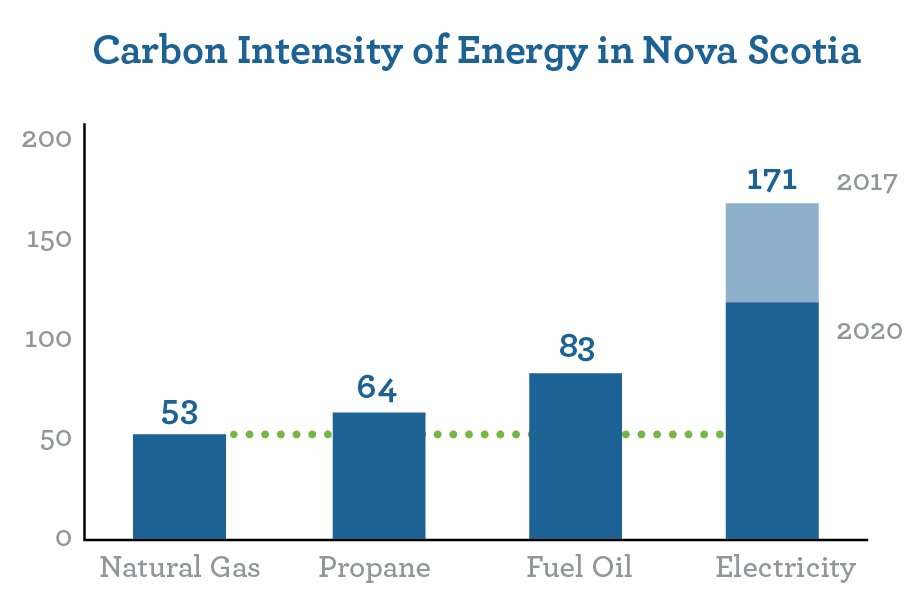No single type of energy will enable Nova Scotia to become a greener province. To meet our diverse energy needs in a low carbon future, Nova Scotia will need to use energy more efficiently and transition to a mix of cleaner energy sources – clean electricity, renewable energy, and lower-carbon fuels.
Nova Scotia’s energy use
Nova Scotia relies on many different energy sources to meet our energy needs. 44% of our energy is used for transportation, buildings use 37%, and industries use 19% 1. About two-thirds of our energy demand is met with refined petroleum products – like gasoline, diesel and fuel oil. Electricity meets about one-quarter. Biofuels, natural gas and propane provide the rest2. While electricity is an important part of our energy mix, electricity alone can’t meet all of our energy needs.

High carbon intensity of electricity generation in Nova Scotia.
Nova Scotia has made significant progress by adding more renewable electricity to our generation mix, but the carbon intensity of our electricity generation is still over 3 times higher than natural gas and 4 times higher than the average carbon intensity for electricity generation in Canada 3,4. Why? Because, unlike most provinces, Nova Scotia still uses fossil fuels, primarily coal, to generate most of our electricity. As a result, electricity generation accounts for 42% of Nova Scotia’s total GHG emissions.

*Carbon intensity is measured in Kg of C02/GJ
The use of coal will likely decline over the next few years as more of Nova Scotia’s electricity shifts to renewable energy like hydro, wind and biomass. While this will reduce the carbon intensity of electricity generation in Nova Scotia, it will still be over 2 times higher than natural gas and 3 times higher than the Canadian average for electricity generation. Further progress can be made to make the electricity grid greener, but there are limits to the amount of renewable energy that can be added while keeping electricity rates affordable. As a result, coal will likely be a significant fuel source for electricity generation in Nova Scotia into the 2030’s.
The way forward.
Becoming a greener province won’t be as simple as switching to electricity to power our vehicles, heat our buildings, and run our industries. To significantly reduce carbon emissions in Nova Scotia we need to think beyond electricity. Natural gas will have an important role to play in our low carbon future to help Nova Scotia use energy more efficiently, make the electricity grid cleaner, transition to lower-carbon fuels, and make renewable energy – like biofuels and renewable natural gas – a bigger part of our overall energy mix.
Sources:
1 Energy Use in Nova Scotia: Canada’s Energy Future Report, 2018
2 Energy Sources in Nova Scotia: Statistics Canada, Supply and demand of primary and secondary energy, 2017
3 Carbon Intensity of Energy in Nova Scotia: Natural Gas, Propane, Fuel Oil
4 Electricity: National Inventory Report, 2017

